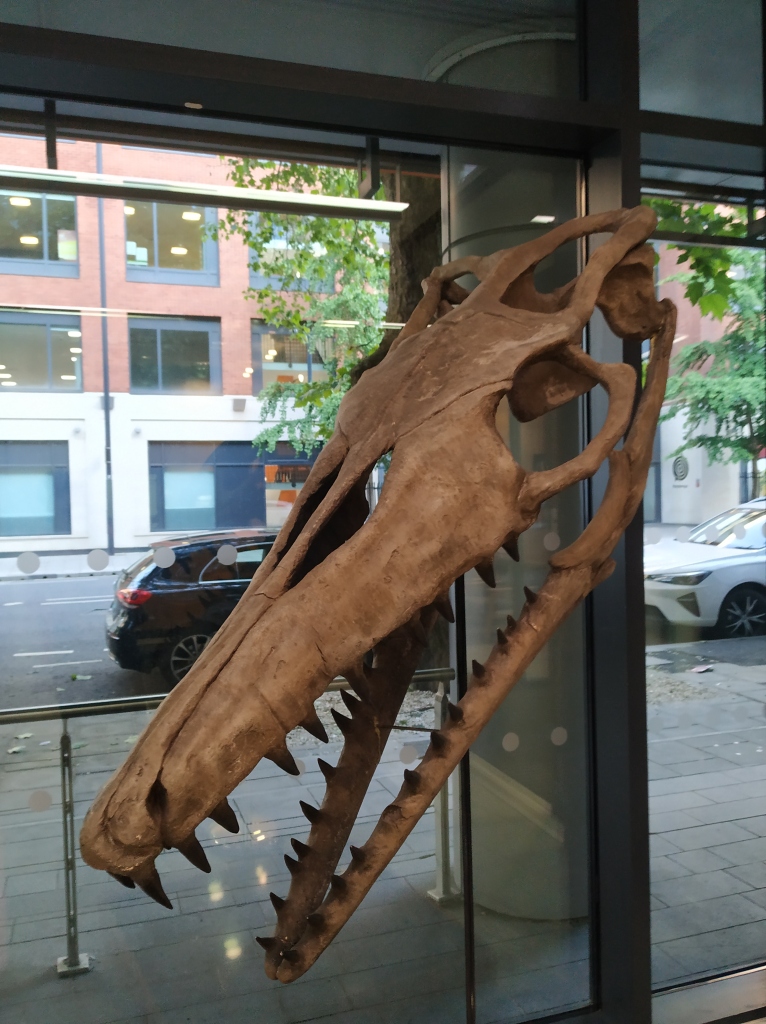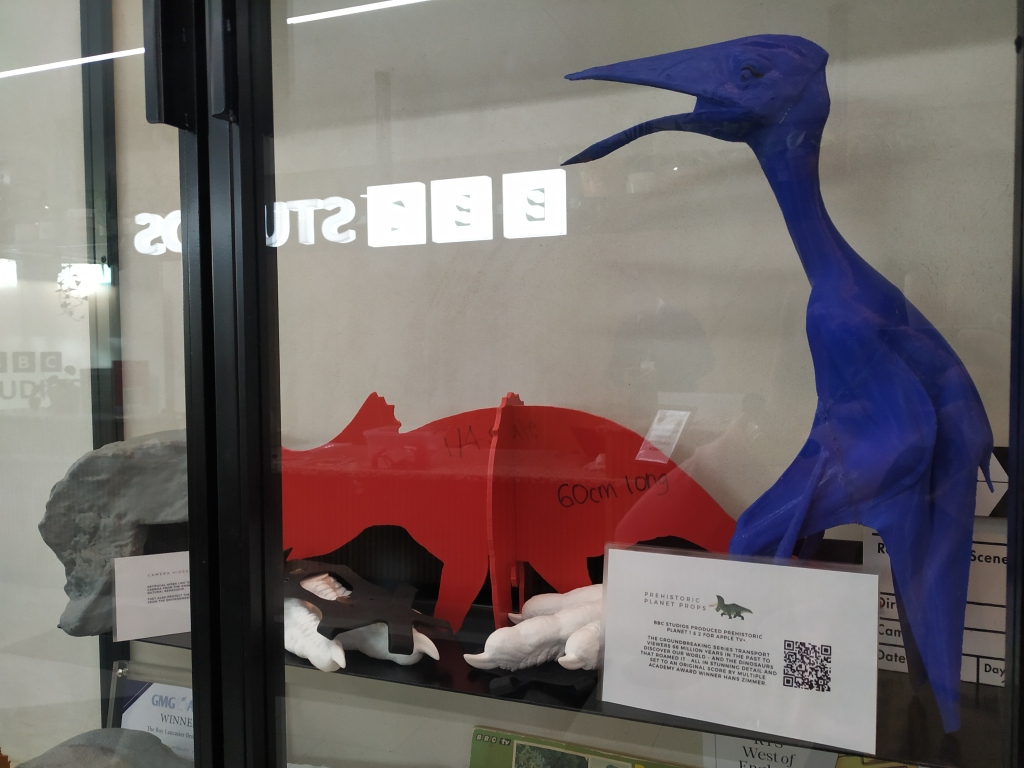I have been to MANY of the events this week that were part of the Bristol and Bath “Festival of Nature“, run each year by the Natural History Consortium. In its 21st year, this festival has been brilliant with a wide array of activities available for lots of different people – not just for kids! From the opening wild weekend where I saw a woven island planter launched from outside the amphitheatre into the canal – soon to become home for water plants and water birds, to a variety of screenings of Natural History documentaries that took me to the IMAX in the aquarium and into BBC Studios. I have met many amazing people and learnt an awful lot too, and over the next few blog posts I will share some of my reflections about how these events interweave within my research.
Behind the scenes talk: Life on Our Planet with Silverback Films

Seeing a VFX dinosaur on an IMAX screen really does leave an impact! But not as much impact as watching the production team plan a sequence in their kitchen with a phone on a Lego rig filming little toy dinosaurs. Creativity and ingenuity was really at the heart of the production team when Silverback Films developed Life on Our Planet (2023) for Netflix.
Note – this picture is from the entrance of BBC Studios, not Netflix or Silverback!
What stood out to me is the mixing of genres. Not being able to film real animals in the wild or in studio set ups as traditional of Natural History films, there is a lot creativity and to and fro-ing between the series creators, scientists and VFX team. This was all with the aim to make something that might resemble what the pre-historic creatures looked like and how they lived many years ago. The show producers who gave the talk were specific in that they wanted the series to “feel like a drama” while being factually accurate. What is clear to me is that the series feels like an entertaining and beautiful re-enactment of Darwin’s “survival of the fittest“, as each episodes captures the evolution and battles for survival or the dynasties that existed in pre-historic times.
What also caught my attention about the Lego sequence, apart from the choice of toys, was how the producers discussed framing these sequences like they would other animals that they film today. Whether distant family relative, like woolly mammoth and elephant, or similar ecological role, like of the predatory pack or lone hunter, the filmmakers would replicate the filmmaking techniques they would use “in the wild” – with the help of amazing VFX artists. For example, they discussed the techniques they would use to frame a predator following a scent trail to help build up the tension for the hunt scene that would follow, except they used this to capture a scary dinosaur that was much bigger than the polar bear or tiger that would classically be filmed this way.

Yes, the pictures I am using in this blog are not from the talk! My blog skills are not up to scratch and I am still trying to remember to take photos when I go to these events. But, I think they make an interesting point. Both BBC and Netflix commissioned a pre-historic themed “blue-chip” Natural History series, which were made at similar times and released at similar times too. Both series were made using standard wildlife techniques mixed with a lot of VFX and tell the stories of the same part of history. They both took a long time to produce, with Life on Our Planet having a production period of roughly 5 years, which would have taken them through the Covid lockdowns. Whether they were commissioned long before Covid I can only assume – if it took 5 years to make – but it is also more convenient to make a VFX sequence in a room then go out on remote locations and film when travelling was much harder or not allowed at all. More recently with two similar sound-themed series also coming out, Apple’s Earthsounds (2024) and Sky’s Secret World of Sound with David Attenborough (also 2024), it does encourage us to question why so many similar Natural History series are being made now that they are no longer limited to being produced solely by the BBC.
With my research’s focus on climate and ecological justice discourses, or what I am starting to call ‘global crises discourses’, the filmmakers at this event finished with a very interesting point: the main character they discovered through the series was “Earth”. Highlighted by the series’ gorgeous exploration of plant species, such as mosses, lichen and ferns, it was not the individual main characters of each story – the many types of long-named dinosaurs – that they aimed to teach us audiences about. But, they wanted to focus on how all of these species interrelated in wider systems that together survived from the mass extinctions of the past and have led to the evolution of what exists today.
The filmmakers outlined that they wanted to teach audiences about the past extinction events to give them an appreciation for the current human-caused 6th mass extinction. It was this pre-context they hoped that would give audiences the ability to understand today’s ecological crises and what the filmmakers saw as our very unique position in having the “ability to reverse the current order of events.”
I do not personally agree that we can reverse the extinctions and level of degradation that has occurred so far, but I do believe that we can act today to mitigate and adapt to the changes that are yet to come to reduce the impact of acting out ‘business as usual’. I do agree with the filmmakers’ call to action, which felt fitting within the Festival for Nature and all of its education and practical activities to get people more engaged with the more-than-human-world.
I want to end on the final message of the series: that as humans we have caused this extinction and we alone have the ability, unlike other animals, to change it and prevent the process of extinction. This message still sits with me today, as having watched the survival of so many incredible species in this series I am left feeling not quite as powerful as part of the human species, who wouldn’t have survived many of those extinctions, and more powerful with the encouragement to act to save the more-than-human-world I love so dearly. It’s safe to say I thoroughly enjoyed this highly entertaining show, while I have also been left wondering am I really that unlike the ‘other’ animals and plants that are threated today? And what is my place with all these other species as part of and within the main character “Earth”?
Thanks for reading and I would be really interested to hear any comments or questions which you can easily send on through the contact page.